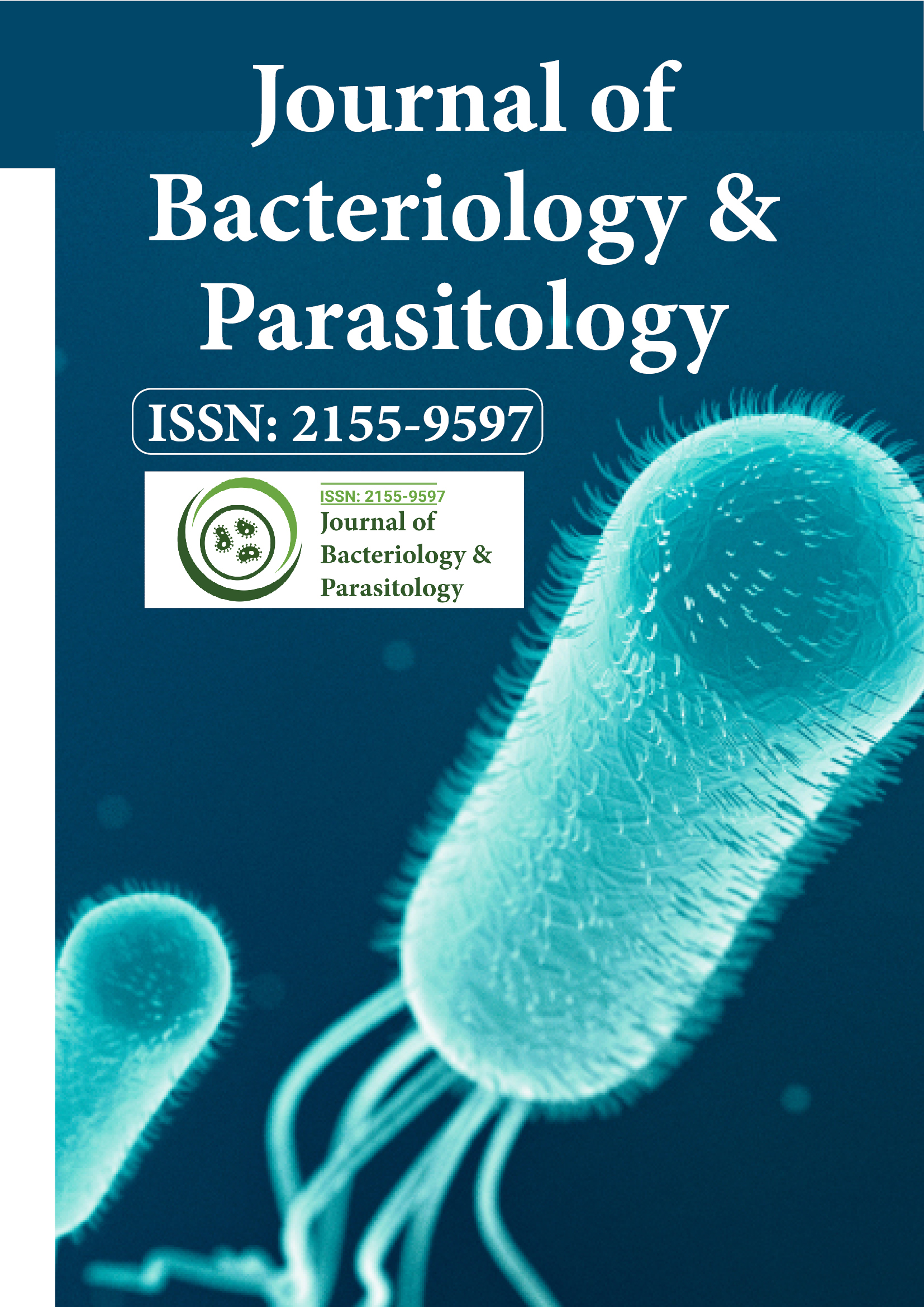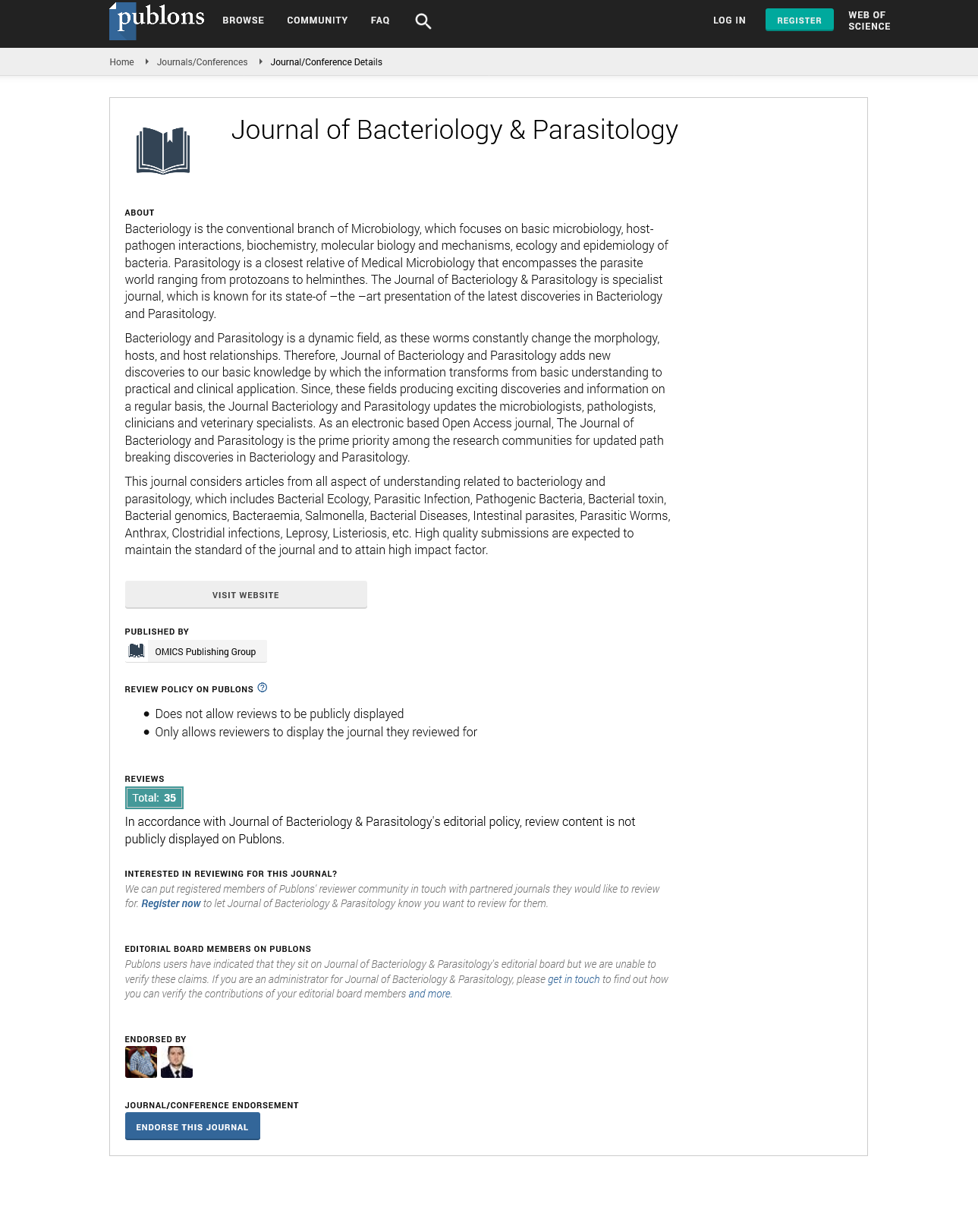Indexed In
- Open J Gate
- Genamics JournalSeek
- Academic Keys
- JournalTOCs
- ResearchBible
- Ulrich's Periodicals Directory
- Access to Global Online Research in Agriculture (AGORA)
- Electronic Journals Library
- RefSeek
- Hamdard University
- EBSCO A-Z
- OCLC- WorldCat
- SWB online catalog
- Virtual Library of Biology (vifabio)
- Publons
- MIAR
- Geneva Foundation for Medical Education and Research
- Euro Pub
- Google Scholar
Useful Links
Share This Page
Journal Flyer

Open Access Journals
- Agri and Aquaculture
- Biochemistry
- Bioinformatics & Systems Biology
- Business & Management
- Chemistry
- Clinical Sciences
- Engineering
- Food & Nutrition
- General Science
- Genetics & Molecular Biology
- Immunology & Microbiology
- Medical Sciences
- Neuroscience & Psychology
- Nursing & Health Care
- Pharmaceutical Sciences
Commentary - (2025) Volume 16, Issue 2
Biofilm Formation by Pathogenic Bacteria and its Role in Chronic Infections
Samuel Blake*Received: 24-Mar-2025, Manuscript No. JBP-25-29942 ; Editor assigned: 26-Mar-2025, Pre QC No. JBP-25-29942 ; Reviewed: 09-Apr-2025, QC No. JBP-25-29942 ; Revised: 16-Apr-2025, Manuscript No. JBP-25-29942 ; Published: 23-Apr-2025, DOI: 10.35248/2155-9597.25.16.536
Description
Many bacterial infections continue because microbes adhere to surfaces and build complex communities known as biofilms. Within these, cells embed in selfâ?produced matrix of polysaccharides, proteins and DNA. This structure protects bacteria from immune attack, antibiotic penetration, and environmental stress. Medical devices catheters, prosthetic joints, artificial heart valves or tissues such as lungs in cystic fibrosis patients often become colonized by biofilms, allowing persistent infection.
Formation begins when freeâ?floating bacterial cells attach to a surface. Once a threshold reached, community develops layers and secretes matrix material. Nutrient and oxygen gradients develop: outer layers have more access, inner layers fewer, so metabolic state differs. Cells deep inside may be in dormant or slowâ?growing state, less affected by antibiotics that target dividing cells. Also resistant to immune cells that cannot reach through matrix. Dispersal stages release cells that may seed new biofilms elsewhere in the host.
Species involved include Pseudomonas aeruginosa, Staphylococcus aureus, Staphylococcus epidermidis, Enterococcus faecalis, Escherichia coli among others. In lung infections, Pseudomonas thrives in biofilm mode, resisting treatment and causing periodic exacerbations. On device surfaces, Staphylococcus epidermidis may detach and cause bloodstream infection. Chronic wound infections exhibit biofilms delaying healing.
Treatment is challenging. High doses of antibiotics, sometimes combinations, may help; removal of infected device often necessary. Agents that degrade biofilm matrix, such as DNase, or enzymes that break polysaccharide linkages, may improve penetration. Use of coated medical surfaces that resist bacterial attachment or release antimicrobial agents reduces establishment. Physical removal by debridement in wounds, flushing of catheters helps.
Diagnosis of biofilmâ?associated infection may require sampling of device surfaces, imaging modalities to detect biofilm presence, molecular assays to detect gene expression of biofilmâ?specific markers. Culture may underestimate bacteria deep inside biofilm. Biomarkers of inflammation and persistent infection sometimes guide suspicion.
Host factors again matter: immune suppression, poor circulation, foreign bodies, tissue damage increase susceptibility. Biofilms tend to form on rough surfaces; material properties of implants influence adhesion: hydrophobicity, surface charge, microstructure all affect initial attachment. Device manufacturers aim to design surfaces that resist adhesion or release bactericidal agents.
Prevention is as important as treatment. Sterilization protocols, aseptic surgical technique, timely removal of devices when no longer needed all limit opportunities. Protocols for catheter management, wound care and implant procedures include checking for early signs of infection. Some studies of probiotics or commensal bacterial species that compete with pathogens show potential to prevent biofilm establishment.
Conclusion
Biofilms represent formidable barriers to successful treatment because of protection provided to bacteria. Understanding of how they form, how they resist therapies, and how to remove or prevent them offers opportunity to reduce chronic infection risk. Coordinated efforts among clinicians, microbiologists, materials scientists and public health officials essential so that incidence falls and patient outcomes improve. Compounds that interfere with adhesion proteins or matrix production are under investigation. Novel materials for implants with antiâ?adhesive coatings, or slow release antimicrobial surfaces, may reduce incidence. Also bacteriophage enzymes capable of degrading biofilms show promise in lab studies.
Citation: Blake S (2025). Biofilm Formation by Pathogenic Bacteria and its Role in Chronic Infections. J Bacteriol Parasitol. 16:536.
Copyright: © 2025 Blake S. This is an open-access article distributed under the terms of the Creative Commons Attribution License, which permits unrestricted use, distribution and reproduction in any medium, provided the original author and source are credited.

